A FINE FRENCH GILT BRASS AND CHAMPLEVE ENAMELLED FIVE-MINUTE REPEATING ALARM CARRIAGE CLOCK RETAILED BY OVINGTON BROTHERS, BROOKLYN, LATE 19th CENTURY The eight-day two train gong striking movement with silvered platform lever escapement regulated by sprung split bimetallic balance and stamped with serial number 1778 to the inside lower edge of the frontplate, the backplate with additional strikework for the five-minute repeat system separately activated via a plunger set within the case moulding above the rear door, alarm mechanism positioned to the upper left and stamped BREVETE, S.G.D.G. to centre over serial number 1778 to lower left, the circular white Roman numeral enamel hour disc inscribed OVINGTON BROTHERS, BROOLYN to the gilt rosette decorated centre within light blue ground cartouche numeral chapter ring, with blued steel hands and set within a fine grotesque dragon inhabited foliate strapwork decorated chased gilt brass and blue enamelled rectangular mask incorporating alarm setting dial to lower margin, the bevel-glazed case with polychrome detailed blue ground enamelled hinged reeded baton carrying handle over thick rectangular glass within the pink, purple and cream leafy scroll decorated blue enamelled top panel incorporating hour-repeat plunger to front, over cavetto cornice and fluted frieze interrupted with enamelled panels to the centre of the front and sides and with five-minute repeat button to rear, the angles with three-quarter Corinthian columns with scroll cartouche panel decorated shafts and cast gilt caps and bases, on conforming skirt base with fluted band and complex top mouldings over dragon and foliate motif decorated panel infill. 17.5cm (7ins) high with handle down, 10cm (4ins) wide, 9cm (3.5ins) deep. Provenance: Private Collection, East Midlands. Ovington Brothers were primarily retailers of fine quality ceramics who opened a large two-story building on Fulton Street in 1870. Unfortunately this premises was destroyed by a disastrous fire in 1883 only to be re-opened as a six-story department store eleven months later. In 1891 Ovington Brothers relocated to a more fashionable location in Flatbush Avenue, and it from this premises that the current lot was most likely sold. In addition to their operations in Brooklyn Ovington Brother also had premises on 5th Avenue in Manhattan and continued trading well into the 20th century. Five-minute repeating clocks are discussed in Allix, Charles and Bonnert, Peter CARRIAGE CLOCKS, Their history and development on pages 197-98. Of the two variations described by Allix the current lot falls into the second type which utilises a second plunger (set above the rear door) to move the spring-loaded rack arbor along its axis in order to fall onto a second five-minute snail fitted along with a star-wheel to the exterior of the backplate. A near identical movement to that of the current lot is illustrated by Allix (Plate VIII/7). Five-minute repeating carriage clocks are explored further by Wotruba, Thomas R, in his article Carriage clocks that are five-minute repeaters published in the December 2021 (No. 42 Vol. 4) issue of ANTIQUARIAN HOROLOGY pages 511-18.
A FINE FRENCH GILT BRASS AND CHAMPLEVE ENAMELLED FIVE-MINUTE REPEATING ALARM CARRIAGE CLOCK RETAILED BY OVINGTON BROTHERS, BROOKLYN, LATE 19th CENTURY The eight-day two train gong striking movement with silvered platform lever escapement regulated by sprung split bimetallic balance and stamped with serial number 1778 to the inside lower edge of the frontplate, the backplate with additional strikework for the five-minute repeat system separately activated via a plunger set within the case moulding above the rear door, alarm mechanism positioned to the upper left and stamped BREVETE, S.G.D.G. to centre over serial number 1778 to lower left, the circular white Roman numeral enamel hour disc inscribed OVINGTON BROTHERS, BROOLYN to the gilt rosette decorated centre within light blue ground cartouche numeral chapter ring, with blued steel hands and set within a fine grotesque dragon inhabited foliate strapwork decorated chased gilt brass and blue enamelled rectangular mask incorporating alarm setting dial to lower margin, the bevel-glazed case with polychrome detailed blue ground enamelled hinged reeded baton carrying handle over thick rectangular glass within the pink, purple and cream leafy scroll decorated blue enamelled top panel incorporating hour-repeat plunger to front, over cavetto cornice and fluted frieze interrupted with enamelled panels to the centre of the front and sides and with five-minute repeat button to rear, the angles with three-quarter Corinthian columns with scroll cartouche panel decorated shafts and cast gilt caps and bases, on conforming skirt base with fluted band and complex top mouldings over dragon and foliate motif decorated panel infill. 17.5cm (7ins) high with handle down, 10cm (4ins) wide, 9cm (3.5ins) deep. Provenance: Private Collection, East Midlands. Ovington Brothers were primarily retailers of fine quality ceramics who opened a large two-story building on Fulton Street in 1870. Unfortunately this premises was destroyed by a disastrous fire in 1883 only to be re-opened as a six-story department store eleven months later. In 1891 Ovington Brothers relocated to a more fashionable location in Flatbush Avenue, and it from this premises that the current lot was most likely sold. In addition to their operations in Brooklyn Ovington Brother also had premises on 5th Avenue in Manhattan and continued trading well into the 20th century. Five-minute repeating clocks are discussed in Allix, Charles and Bonnert, Peter CARRIAGE CLOCKS, Their history and development on pages 197-98. Of the two variations described by Allix the current lot falls into the second type which utilises a second plunger (set above the rear door) to move the spring-loaded rack arbor along its axis in order to fall onto a second five-minute snail fitted along with a star-wheel to the exterior of the backplate. A near identical movement to that of the current lot is illustrated by Allix (Plate VIII/7). Five-minute repeating carriage clocks are explored further by Wotruba, Thomas R, in his article Carriage clocks that are five-minute repeaters published in the December 2021 (No. 42 Vol. 4) issue of ANTIQUARIAN HOROLOGY pages 511-18.
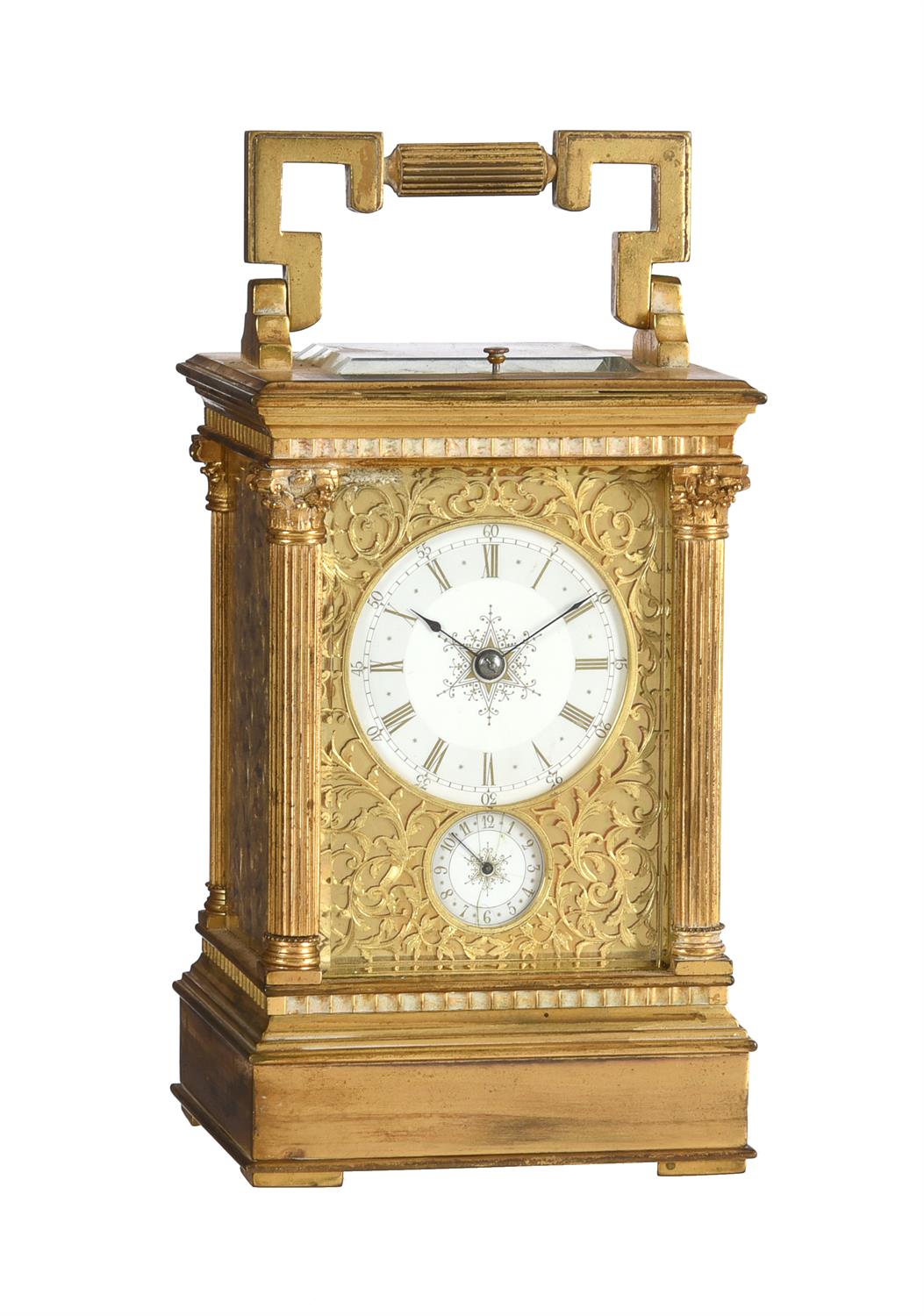
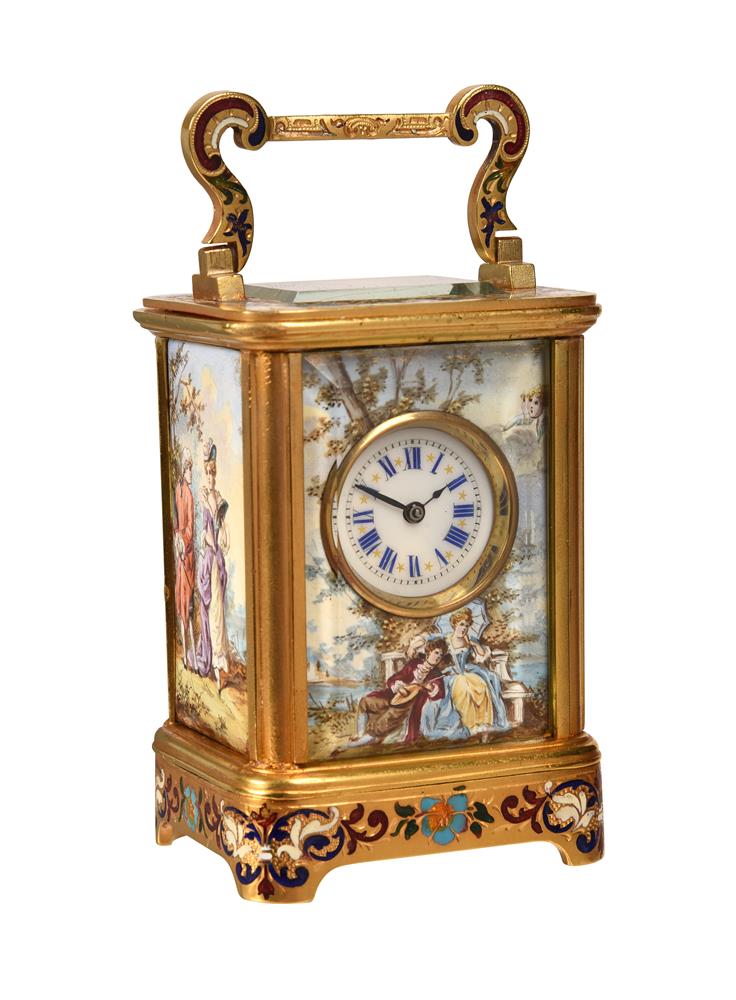
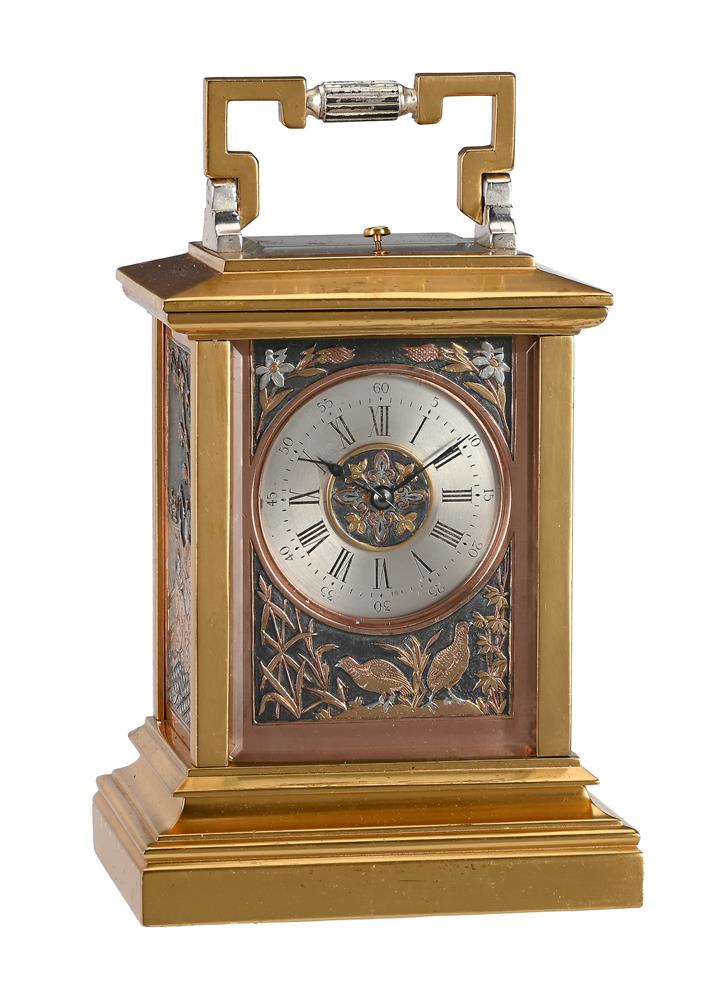
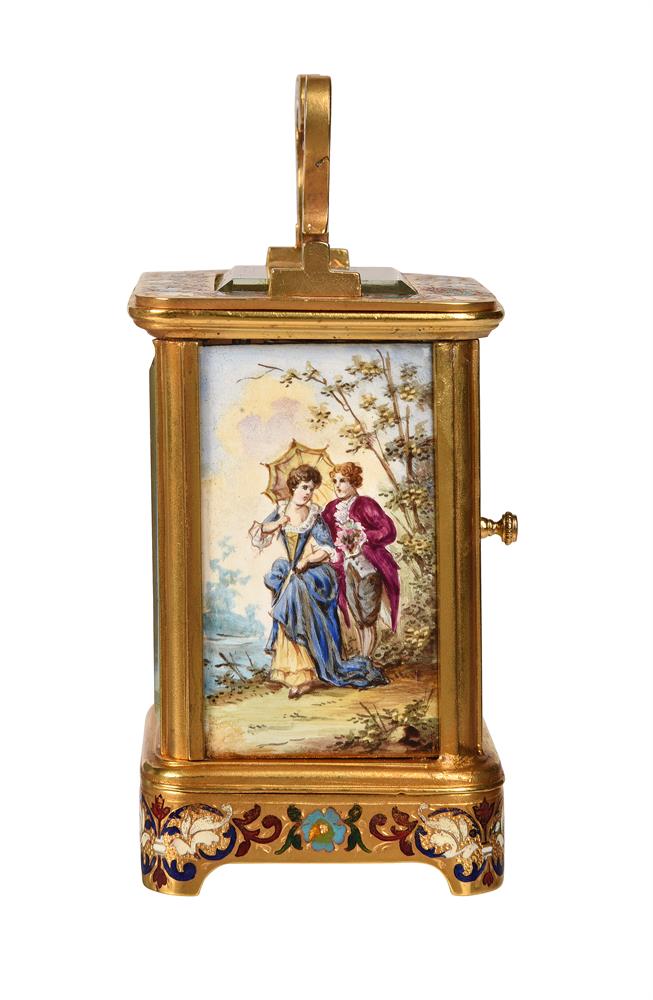
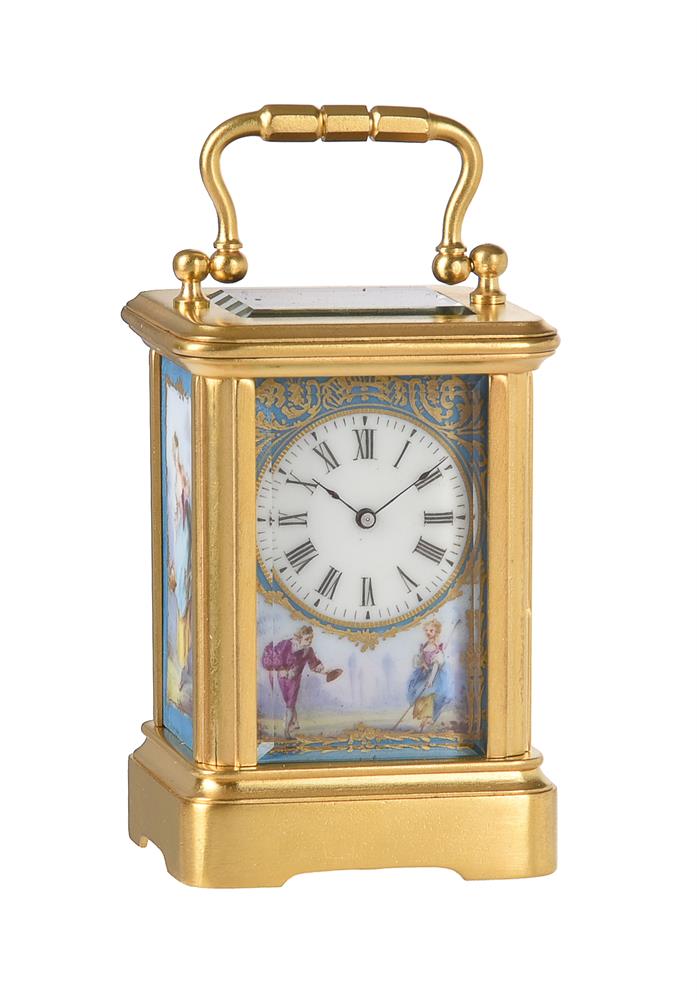
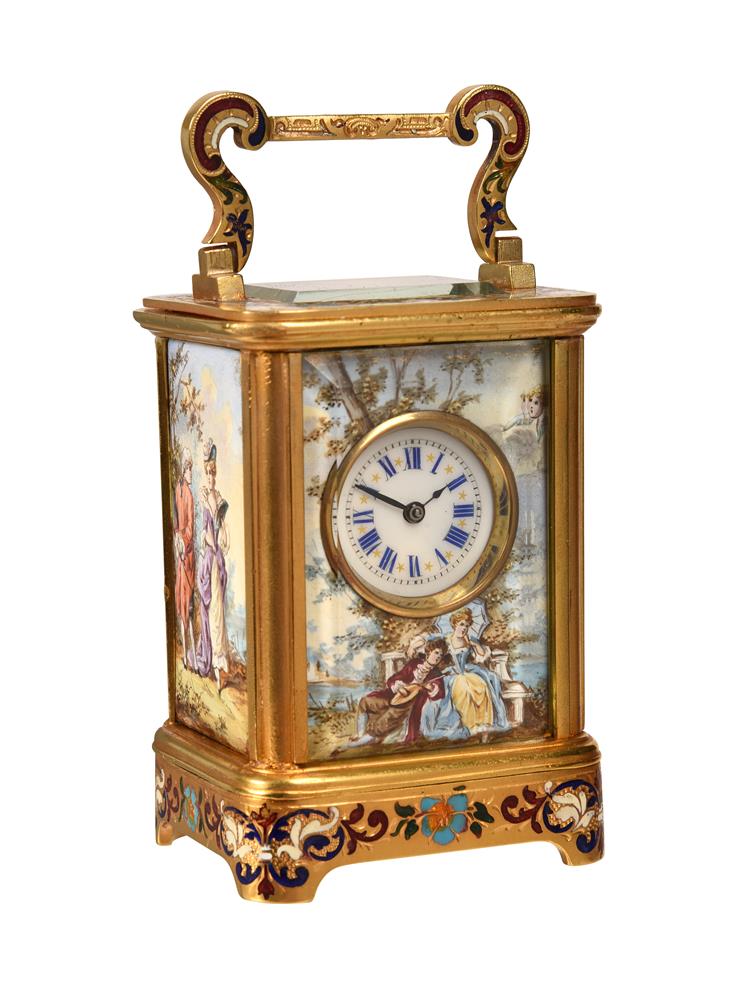
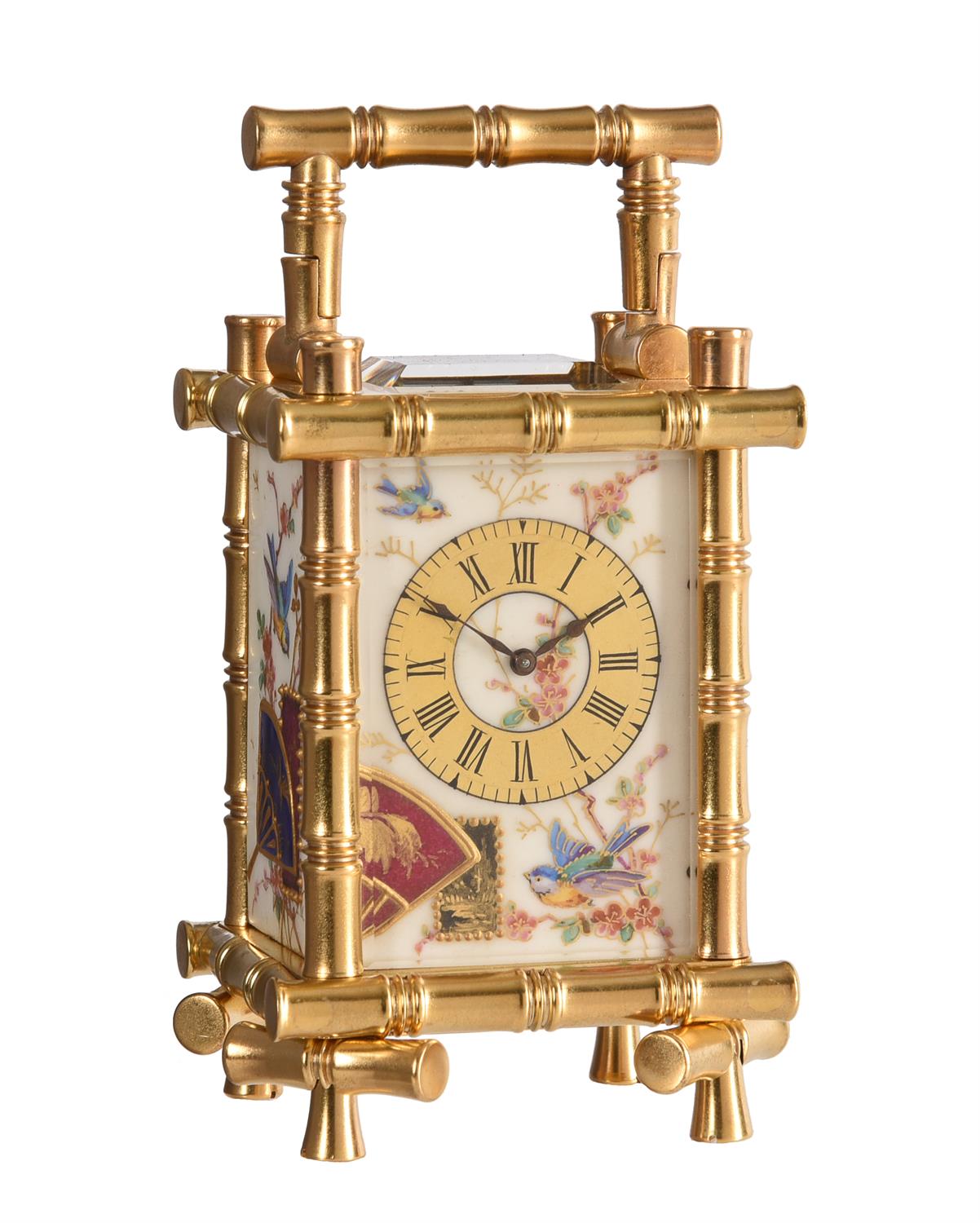
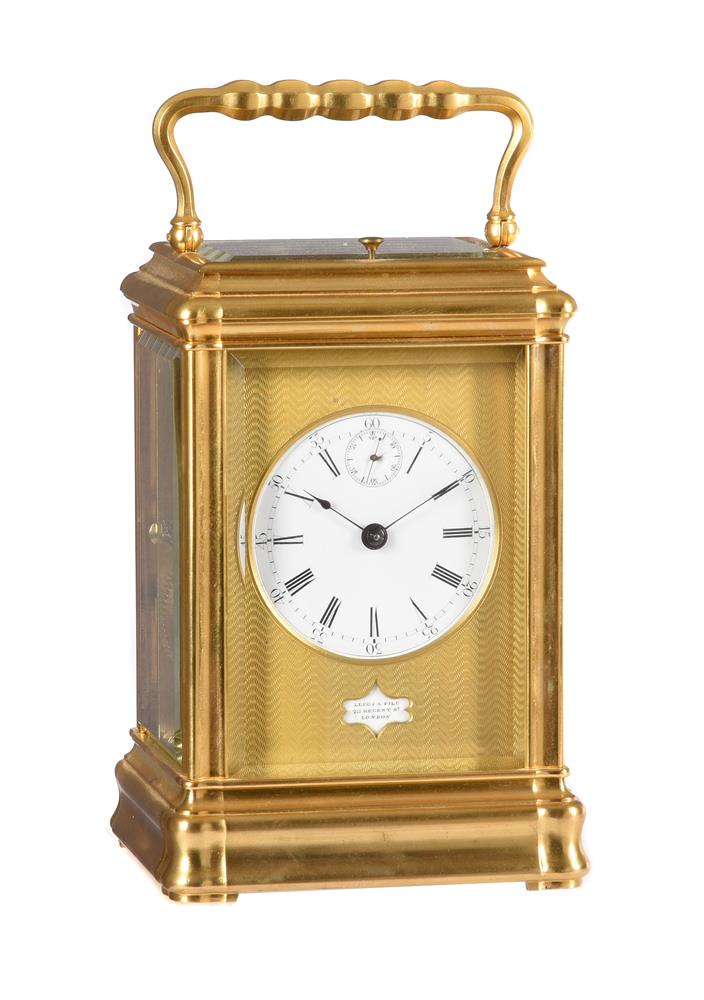
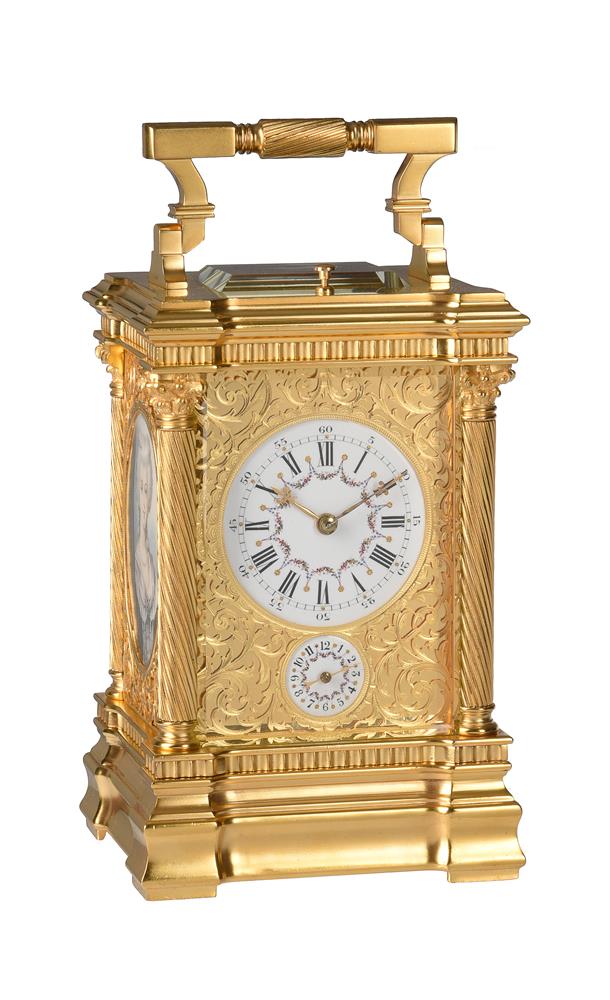
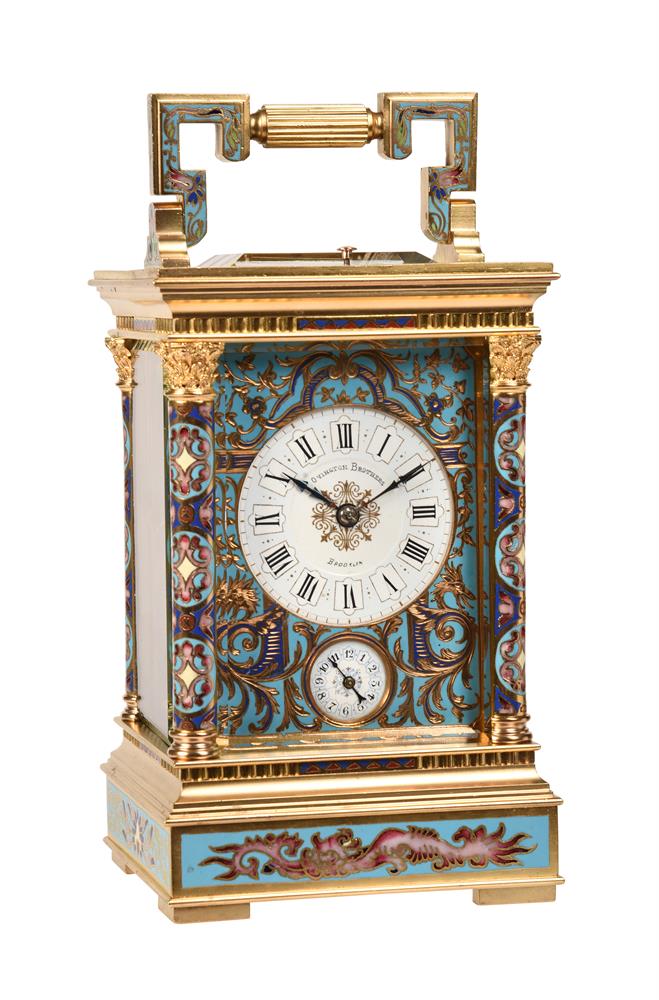
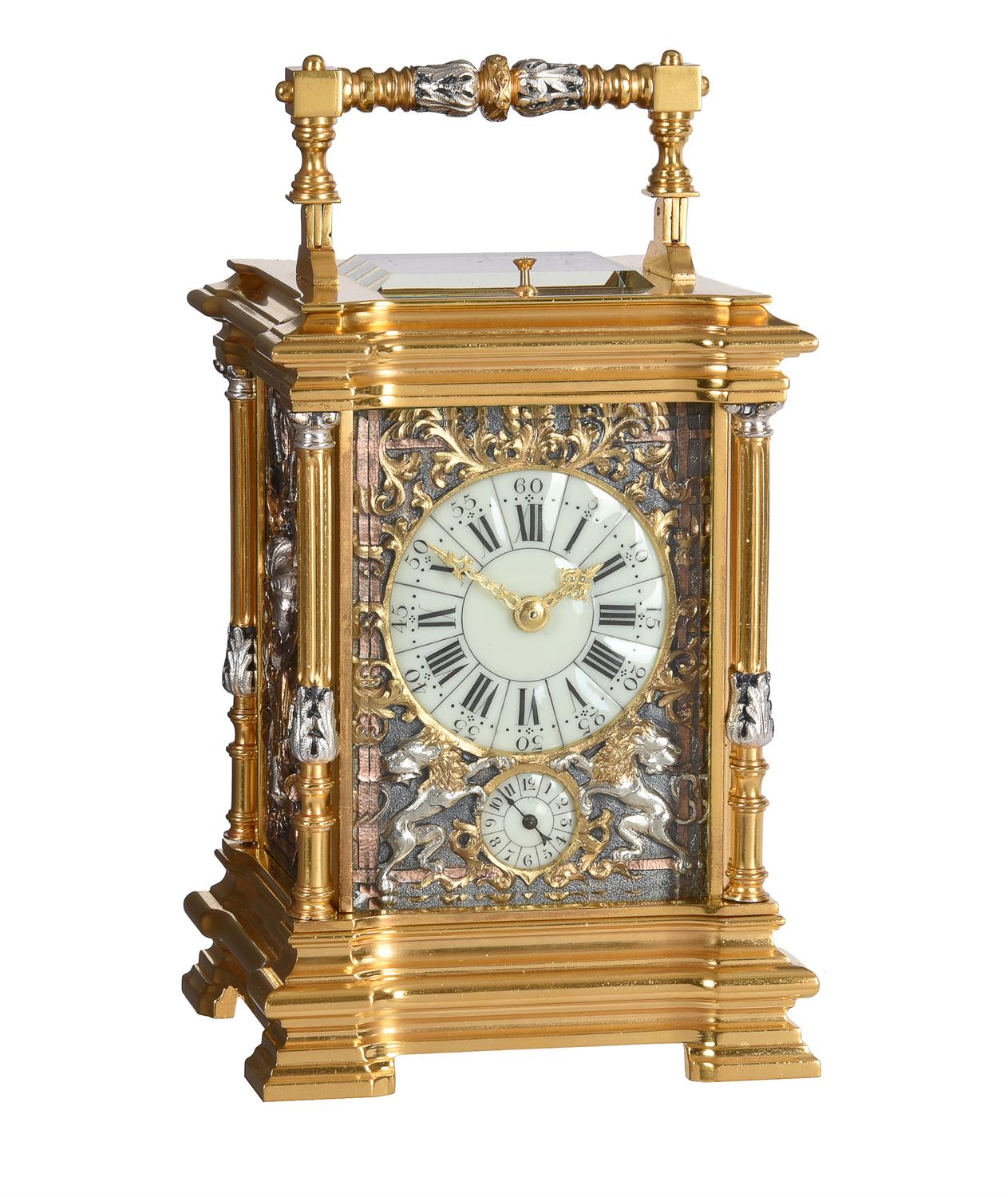
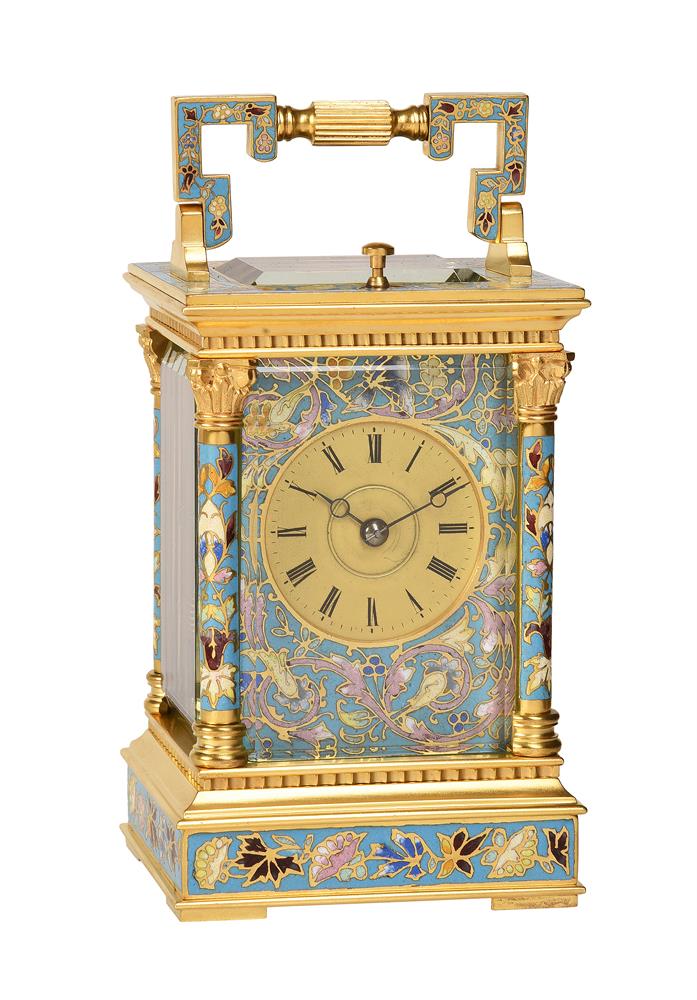
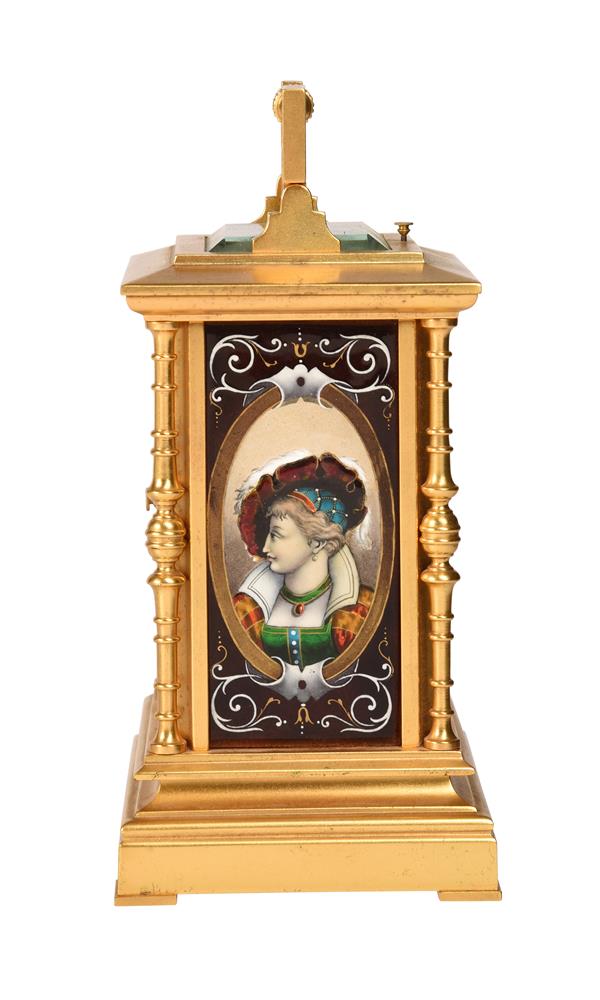

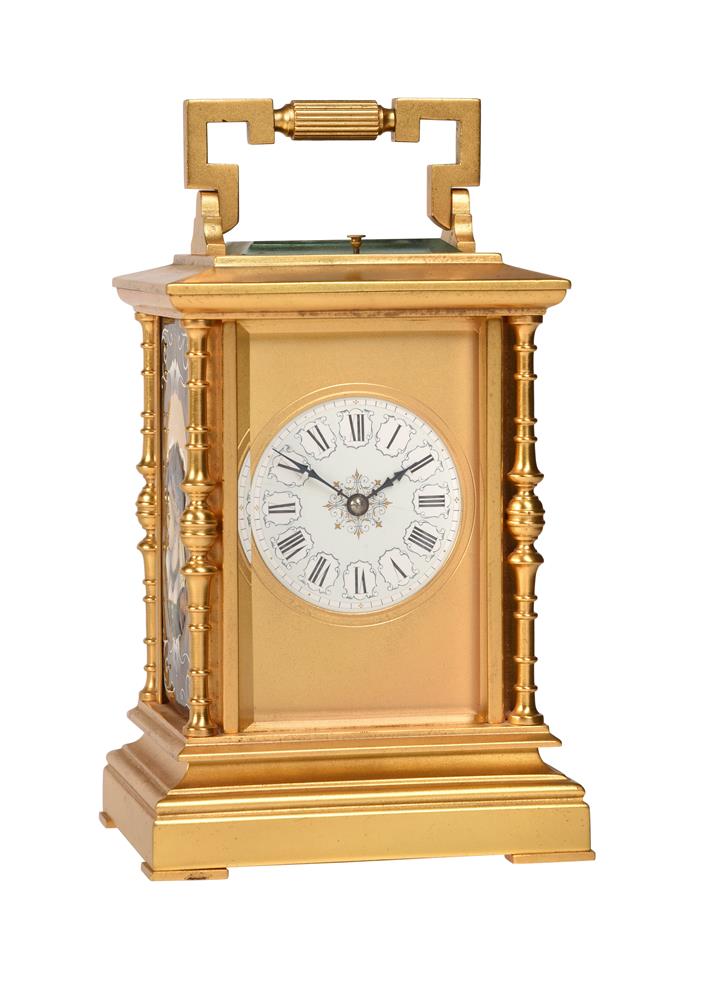
Testen Sie LotSearch und seine Premium-Features 7 Tage - ohne Kosten!
Lassen Sie sich automatisch über neue Objekte in kommenden Auktionen benachrichtigen.
Suchauftrag anlegen